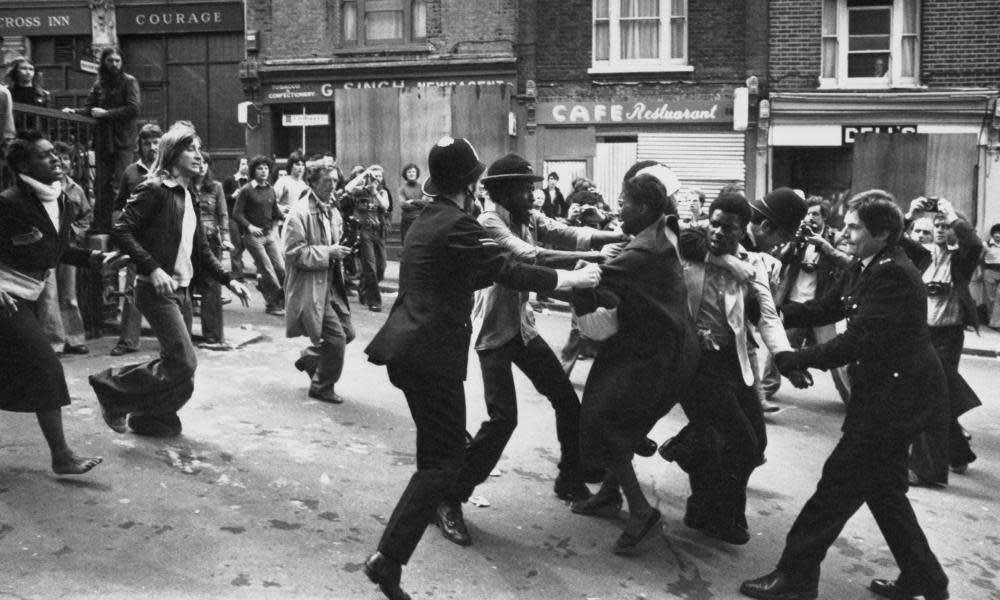Met police chiefs decided not to infiltrate far-right groups in 70s, hears inquiry

Police leaders took a high-level policy decision not to place undercover officers in far-right groups at a time when fascists were intimidating and attacking ethnic minority communities in the 1970s, an inquiry has heard.
The undercover police officers that were sent to infiltrate political groups during that time were exclusively targeted at leftwing and progressive groups, including those opposing fascists.
Former DI Angus McIntosh told the inquiry on Thursday: “My recollection is that this was a high-level policy decision, and I certainly was too junior to be a part of this.”
Asked why, he replied: “It was a very violent section, and it was often involved in crime, so to put an undercover officer into that would have very, very difficult.”
Between 1976 and 1979, McIntosh was the deputy head of a Metropolitan police undercover unit, the Special Demonstration Squad (SDS).
The inquiry – led by retired judge Sir John Mitting – is reviewing the activities of 139 undercover officers who spied on more than 1,000 mainly leftwing political groups between 1968 and at least 2010.
The current phase of the inquiry is questioning the managers in charge of the covert operations between 1968 and 1982, and is due to end on Friday.
In the 1970s, fascist organisations such as the National Front organised provocative marches through areas that had sizeable ethnic minority communities. The communities and anti-fascist campaigners resisted the marches amid public disorder on the streets.
Geoffrey Craft, who led the SDS in 1976 and 1977, told the inquiry on Wednesday that police had “other sources in the far right” so it was not necessary to place undercover officers from his unit in fascist groups.
This appears to be a reference to another method of infiltration – the use of informants. These are individuals who are members of groups and are persuaded through a variety of means to pass on information secretly to the police.
The police used both methods of infiltration – undercover officers and informants – to collect information on leftwing activists.
Related: Police spies infiltrated UK leftwing groups for decades
Barry Moss, the head of the SDS during 1980, told the inquiry last Friday: “There was probably a policy decision at that time not to deploy anyone into the far right, because they were too violent, and we were concerned what the officer may have to do to prove his credentials.”
Moss blamed leftwing groups for causing disorder when they sought to prevent fascist marches, adding: “If the National Front had just been allowed to demonstrate and the left wing hadn’t turned up, there probably wouldn’t have been any disorder.”
An undercover police officer who infiltrated the leftwing Socialist Workers party (SWP) in the 1970s was asked by the inquiry who had initiated the violence on the streets during these demonstrations. He replied: “It depended on exactly where it was and how many people were there. From the SWP side, it was mostly shouting. From the far right thing, it was mostly physical violence.”
The SDS, which was founded in 1968, first sent one of its undercover officers to infiltrate the far right in the 1980s. After that, a handful of far-right groups were monitored.
An analysis of the political groups that were known to have been spied on by undercover officers between 1968 and 2010 shows that the police overwhelmingly spied on leftwing and progressive political groups.

 Yahoo Movies
Yahoo Movies 
